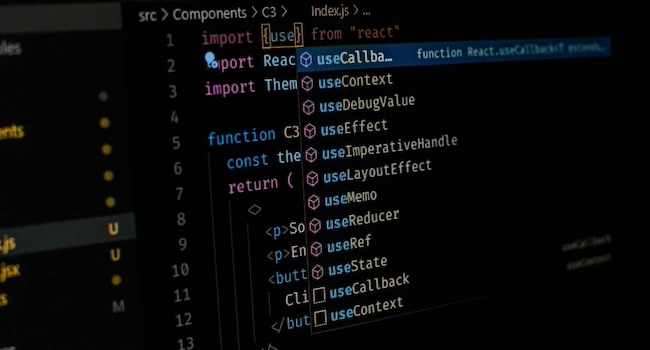Best Tech Stack for SaaS Applications in 2024
Why is it important to consider the technology stack when it comes to building SaaS applications?

Table of Contents:
A tech stack combines the tools and technologies you can choose to build your web or mobile applications.
Think of it as your toolkit—each has a specific purpose, and the right combination can speed up your project delivery.
Carefully selecting tech stacks helps you solve common issues such as compatibility problems, scalability constraints, and integration complexities, saving time and improving workflow efficiency.
However, there are so many options available. Where do you start, and which ones should you choose?
In this article, you'll learn how to select the best tech stack for your requirements and lay the foundation for building robust and scalable SaaS applications.
What Is A Tech Stack?
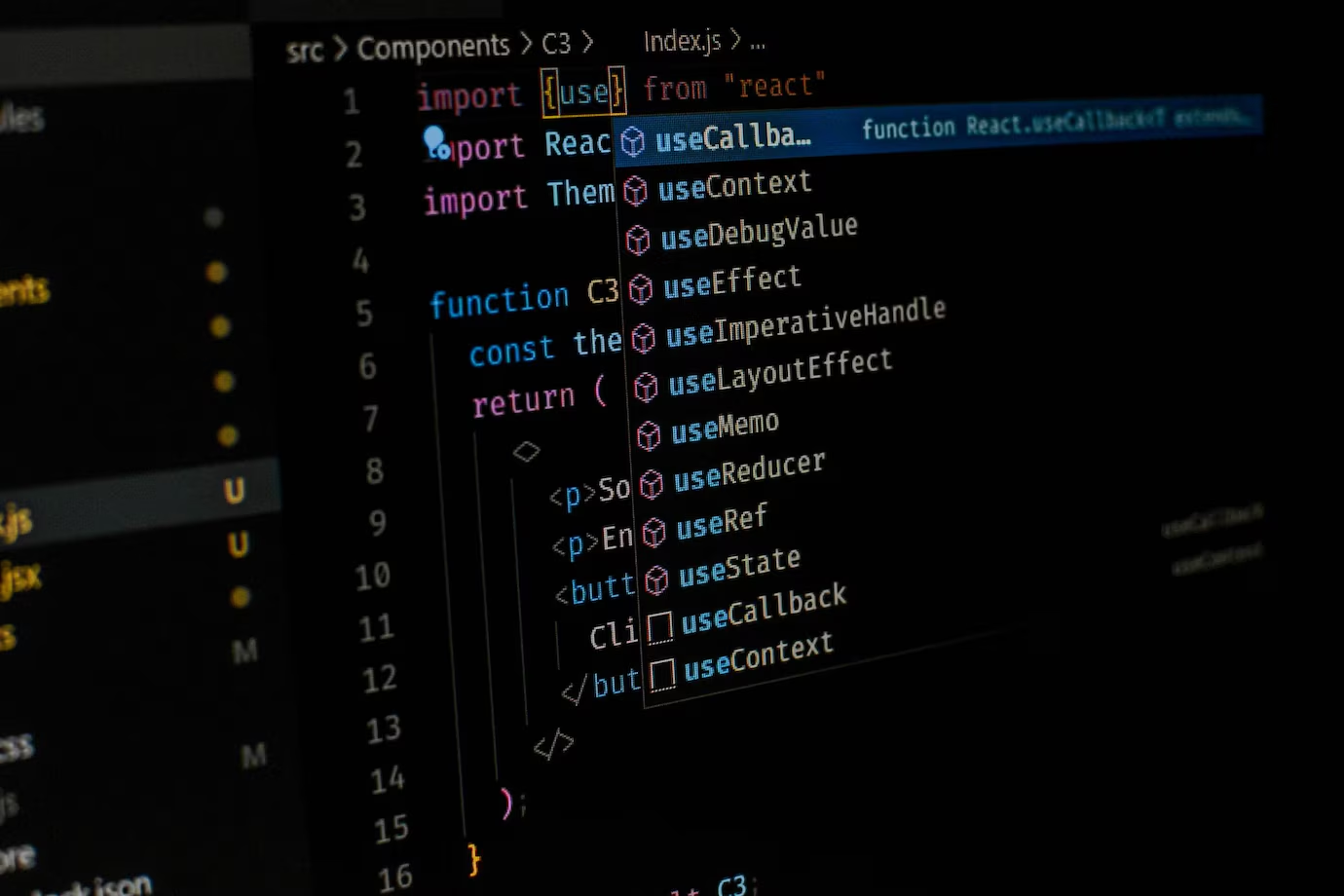
A modern tech stack, or technology stack, refers to the collection of tools and technologies developers use to build and run mobile applications or websites.
Modern tech stacks include programming languages frameworks and databases, which enable the creation of a complete software solution.
Key components include:
- Front-end: This refers to the client side of the application and encompasses everything that the user directly interacts with. It involves languages such as HTML, CSS, and JavaScript frameworks like React or Angular.
- Back-end: This includes the server, database, and application logic. It involves languages like Python and Ruby and databases like MongoDB or MySQL.
When selecting your tech stack, consider the project requirements, team expertise, and scalability needs to ensure efficient development and maintenance.
What Is An Example Of A Technology Stack?
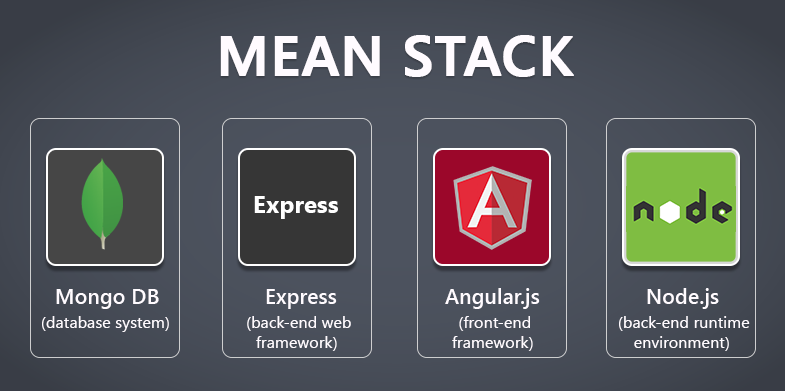
One popular example is the MEAN stack. MEAN stands for:
- MongoDB: A NoSQL database.
- Express.js: A web application framework for Node.js.
- Angular: A front-end framework for user interface.
- Node.js: A JavaScript runtime environment for server-side code.
This solutions stack is widespread due to its flexibility, with client and server sides using JavaScript. This consistency allows developers to use a single programming language throughout the entire application.
Why Is It Important To Get The Right Tech Stack?
Choosing the right tech stack is crucial for your development team. It directly affects performance and scalability. Different tech stacks can handle growing user demands and complex features.
Popular tech stacks align with your team's skills, reducing learning curves and boosting productivity. Consider the right tech stack to ensure smooth and efficient product development.
The right tech stack ensures maintainability. Updating and maintaining your project becomes more severe if your tech choices are outdated. It can slow down your progress and frustrate your team.
Business needs also play a significant role. Ensure the tech stack supports your business goals and can integrate with existing systems. This will enable better business intelligence and smoother operations.
Lastly, hiring the right talent becomes simpler. If your stack uses popular and well-known technologies, finding skilled developers is easier. It can save time and resources during recruitment.
Your tech stack can also influence your choice between outsourcing and in-house development. Outsourced teams might be better with specific technologies that align with your project needs.
Selecting the right tech stack impacts development efficiency, maintainability, business alignment, and talent acquisition, making it a foundational decision in any successful tech project.
How To Pick A Tech Stack For SaaS

Choosing the right tech stack for your SaaS is crucial. Here are some practical tips to guide you:
- Project requirements: Identify your project's specific needs, including the app's size, complexity, and scalability requirements. For example, larger projects often need robust frameworks and databases.
- Team skills: Assess your development team's expertise. Choose technologies that they are familiar with. This will help with faster development and easier maintenance.
- Time to market: Consider how quickly you need to launch. Some technologies allow for rapid development, which can be crucial in a competitive market.
- Security and reliability: Opt for technologies known for strong security practices. This will help protect user data and ensure the reliability of your app.
- Performance: Evaluate how the tech stack impacts performance. Technologies that improve speed and efficiency can improve user experience.
- Cost: Factor in the price of development and maintenance. Open-source technologies can reduce expenses.
- Development process: Understand how the tech stack fits your development process. The right tools should streamline your workflow.
- Remote Teams: If hiring remote developers, choose a tech stack that supports collaborative work. It can be vital when hiring a remote team for enterprise app development.
Choosing the right tech stack involves balancing many factors. Ensure it aligns with your project's requirements, team's skills, and long-term goals.
The Top Tech Stacks For SaaS Applications
Choosing the right tech stack is crucial for building a successful SaaS application. Here are some of the top tech stacks to consider.
Frontend technologies
When building web pages and user interfaces, choosing the right frontend technologies is crucial.
React
A JavaScript library for creating user interfaces developed by Facebook (now Meta). It is widely used for its component-based architecture and efficient rendering. Facebook and Instagram use React to create dynamic and responsive user interfaces.
Angular
A TypeScript-based framework developed by Google suitable for building large-scale applications. It is known for its robust structure and comprehensive toolset. Google Ads and Google Cloud Platform use Angular for their front-end development.
Vue.js
Vue.js is a progressive JavaScript framework for developing user interfaces. It is designed to be incrementally adoptable and focuses on the view layer. Alibaba and Xiaomi use Vue.js for their front-end development due to its flexibility and performance.
Using these tools, you can create responsive and interactive websites. It’s essential to stay updated with the latest trends in web development.
Backend technologies
Backend technologies power the server side of web applications. These tools ensure that your app is scalable, fast, and reliable.
Node.js
A JavaScript runtime developed on Chrome's V8 engine, allowing server-side scripting. It is known for its event-driven architecture and non-blocking I/O operations. LinkedIn and Netflix use Node.js to handle high-traffic applications and real-time data processing.
Django
A high-level Python framework that promotes fast development and uncluttered, pragmatic design. It has many built-in features, reducing the need for third-party libraries. Instagram and Pinterest use Django for its scalability and security features.
Ruby on Rails
A server-side web application framework written in Ruby. It complies with the convention over configuration (CoC) and don't repeat yourself (DRY) principles. GitHub and Shopify use Ruby on Rails for its rapid development capabilities and ease of maintenance.
Databases
Databases are critical components of your tech stack. They store and manage your application's data, ensuring it's accessible, secure, and easy to manipulate.
PostgreSQL
PostgreSQL is an open-source relational database known for its strength, ability to grow, and support for advanced data types and performance optimization. Skype and TripAdvisor use PostgreSQL for its reliability and complex query support.
MongoDB
A NoSQL database that compiles data in JSON-like documents, providing flexibility and scalability for handling large volumes of unstructured data. Uber and eBay use MongoDB to manage large datasets and real-time analytics.
MySQL
MySQL is an open-source relational database management system known for its speed and reliability. It is widely used in web applications. WordPress and Facebook use MySQL for its performance and ease of use.
When selecting a database, consider your needs for data storage, query complexity, and scalability. Each database has its strengths, and understanding these can help you make an informed decision.
DevOps And Cloud Services
DevOps integrates development and operations to improve efficiency. Combining this with cloud services improves software delivery.
AWS (Amazon Web Services)
A comprehensive cloud platform providing many services, including computing power, storage, and databases, to help businesses scale and grow. Airbnb and Slack use AWS for its scalability and extensive service offerings.
Docker
Docker is a containerization platform. It packages an application and its dependencies in a container, ensuring it runs seamlessly across different environments. Containers work on any operating system that supports Docker.
PayPal and Spotify use Docker to ensure consistent deployment environments and streamline their CI/CD pipelines.
Kubernetes
An open-source container orchestration platform that automates the deployment, scaling, and management of containerized applications. For example, scaling a web server can be done effortlessly using Kubernetes, optimizing resource use.
Google and Shopify use Kubernetes to manage their containerized applications and ensure high availability.
Using these cloud platforms with DevOps practices helps optimize the software development lifecycle, from coding to deployment. Combining these services ensures that your applications are secure, scalable, and reliable.
Security Considerations
When building your tech stack, security is crucial. Start by identifying key assets you need to protect, including sensitive data, customer information, and internal communications.
Next, ensure endpoint protection. This means securing all devices that connect to your network. Use antivirus software and firewalls to keep threats at bay.
Network security is another vital component. Employ solutions like intrusion detection systems (IDS) and encryption to protect data as it travels across the network.
Email security is also essential. Implement spam filters and phishing detection to safeguard against malicious emails. It can prevent data breaches and unauthorized access.
Remember data loss prevention (DLP). DLP systems help by monitoring and protecting your sensitive data from being leaked or lost.
Lastly, consider vulnerability management solutions. Regularly scan your systems for vulnerabilities and patch them. Keeping your software up-to-date can prevent exploits.
Combining these measures can help you build a robust security framework for your tech stack.
Hiring Experts With StarNAVI
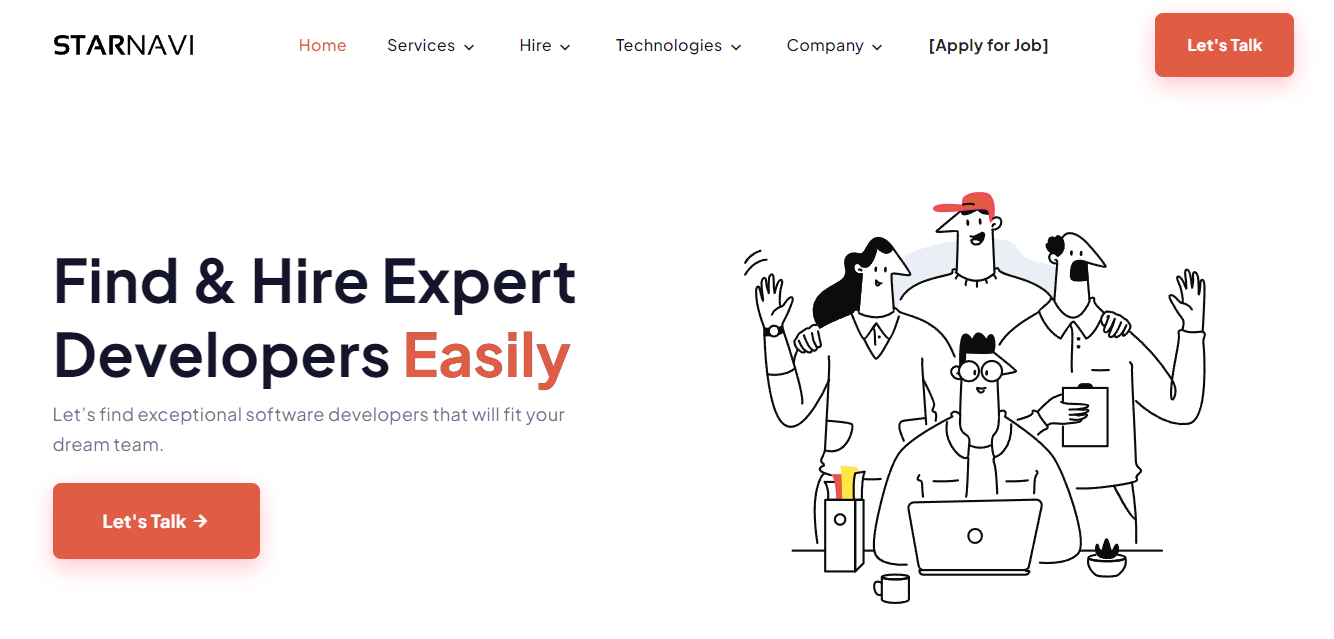
StarNAVI offers a seamless way to hire top IT professionals. By collaborating with our company, you can access a network of highly skilled developers from Eastern Europe. It ensures you find the best talent without spending excessive time and resources on hiring.
Staff augmentation services
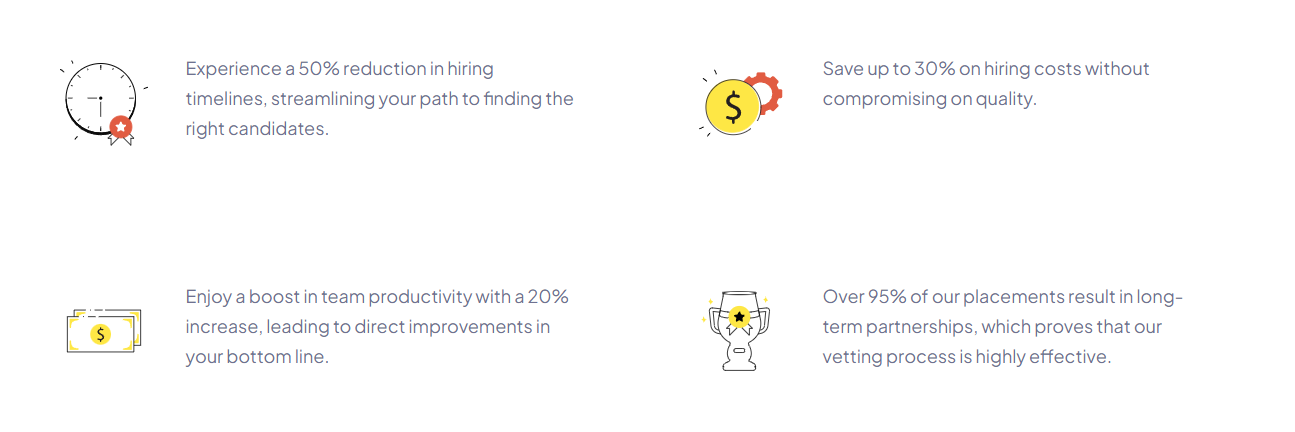
Hiring through staff augmentation allows you to bring in professionals for specific projects. Companies often turn to agencies like StarNAVI for their technical expertise, caring for tasks like legal compliance, screening candidates, and managing contracts.
Benefits:
- Time efficiency: Quickly hire skilled developers.
- Administrative relief: Avoid the hassle of paperwork and legal matters.
- Technical assessment: Ensure the right fit for your project.
Hiring specialized developers
StarNAVI lets you hire developers with specific skills like ReactJS, Java, or DevOps. This flexibility is crucial for companies with unique project requirements. Whether you need front-end developers, back-end experts, or full-stack engineers, StarNAVI can match you with the right talent.
Advantages:
- Access to a vast talent pool: Quickly find professionals with the skills you need.
- Flexibility: Hire experts only for the duration required to complete your project.
- Cost-effectiveness: Save on long-term employment costs by hiring on a project basis.
Ready to improve your team with expert IT professionals?
Contact us today to explore our services and find the perfect fit for your needs.
Final Words About Tech Stacks For SaaS Applications
Choosing the right tech stack for your SaaS application is crucial. It impacts everything from performance to security. Whether you are focusing on front-end, back-end, or databases, each choice matters.
When building a SaaS tech stack, consider user adoption and reducing churn. It means selecting reliable and scalable tools.
Popular choices include React and Angular, each offering unique benefits. While Google maintains Angular and provides advanced logic, it can be more time-consuming than React.
Frameworks like Node.js and Ruby on Rails are common for the back end. They provide flexibility and support for various operations.
Both SQL and NoSQL databases are available. SQL databases, like PostgreSQL, are known for their reliability and powerful query capabilities.
Other tools essential for a complete stack include development tools, libraries, and cloud services. For instance, AWS and Google Cloud offer extensive SaaS application deployment and scaling support.
By carefully selecting each component of your tech stack, you can build a robust and efficient SaaS application that meets your business needs.
If you need to hire a dedicated team of developers for your project, StarNAVI is here to connect you with top experts and guide you every step of the way.






